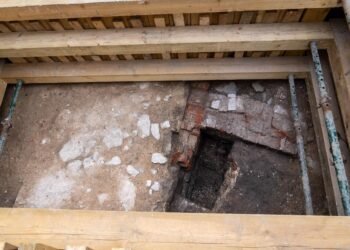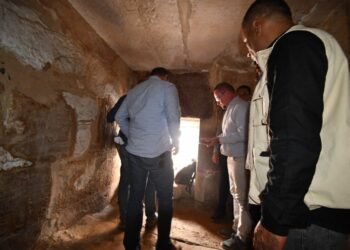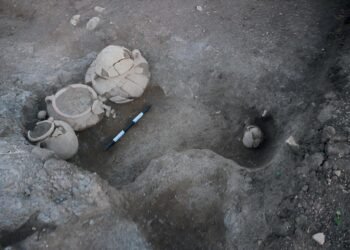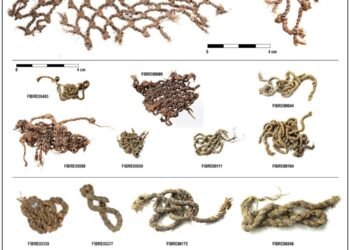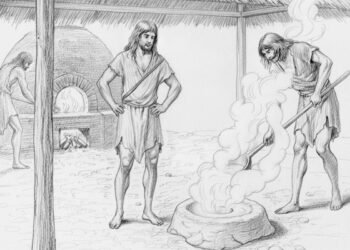Archaeologists from the National Institute of Anthropology and History (INAH) have made a significant discovery during the construction of Section 7 of the Maya Train near the village of Conhuas in the Mexican state of Campeche.

The finding is an anthropomorphic limestone statue dating back to the Early Classic Period (CE 200-600) and represents a Maya death deity, possibly Cizin or Kisin, known for their association with the afterlife.
The statue, measuring 25 centimeters in height, depicts the deity in a seated position and exhibits distinctive features, including an erect tabular cranial modification, a nose ring, and a mask.
These characteristics align with mortuary motifs and suggest a connection to a deity of death, as stated by the head of the INAH.
The discovery took place near Balamku, an archaeological zone featuring a Maya temple complex known for its well-preserved stucco friezes. Balamku is in close proximity to the excavation site for Section 7 of the Maya Train project, which has also yielded other significant findings.
So far, 21,960 immovable sites have been identified for protection, alongside 72,480 ceramic potsherds, 64 human burials, and 227 natural features associated with human occupation.
This discovery adds to the growing body of knowledge about the ancient Maya civilization. It is noteworthy that in April 2023, another important finding was made during the same excavations: a statue of Kʼawiil, the Maya lightning god.
This statue is significant as only three others have been discovered previously, all originating from Tikal in Guatemala. The inclusion of Kʼawiil in Maya mythology is crucial to understanding their religious beliefs, particularly in relation to serpents, fertility, and maize.
The ongoing archaeological work along the Maya Train project is shedding new light on the history and heritage of the Maya civilization. These discoveries underscore the importance of preserving and studying these ancient sites, as they offer valuable insights into the past and enrich our understanding of this fascinating ancient civilization.
While the exact identification of the deity depicted in the recently found statue remains uncertain, Diego Prieto Hernández, the General Director of the INAH, described it as a figure that “appeals to mortuary motifs and would be linked to a deity of death.”
The Maya pantheon includes numerous deities, and the god of death, Cizin or Kisin, is often portrayed wearing a “death collar” made of disembodied eyes connected by their nerve cords. In other depictions, Cizin appears as a dancing skeleton holding a cigar-like object emitting smoke.
The limestone effigy was discovered near Balamkú, an archaeological site consisting of three complexes, with the largest known as the Temple of the Jaguar due to feline engravings on its walls.
The Maya civilization flourished between 200 and 900 A.D., dominating southeastern Mexico, Guatemala, Belize, and parts of El Salvador and Honduras. The Maya held a belief in divinity permeating all things, even inanimate objects and considered caves as sacred entrances to the underworld.
The underworld was believed to have nine layers, each governed by a Lord of the Night, although it remains unclear whether the limestone statue represents Cizin or another Lord of the Night.
Research is ongoing to gain further insights into this recent discovery and its significance within Maya mythology.



